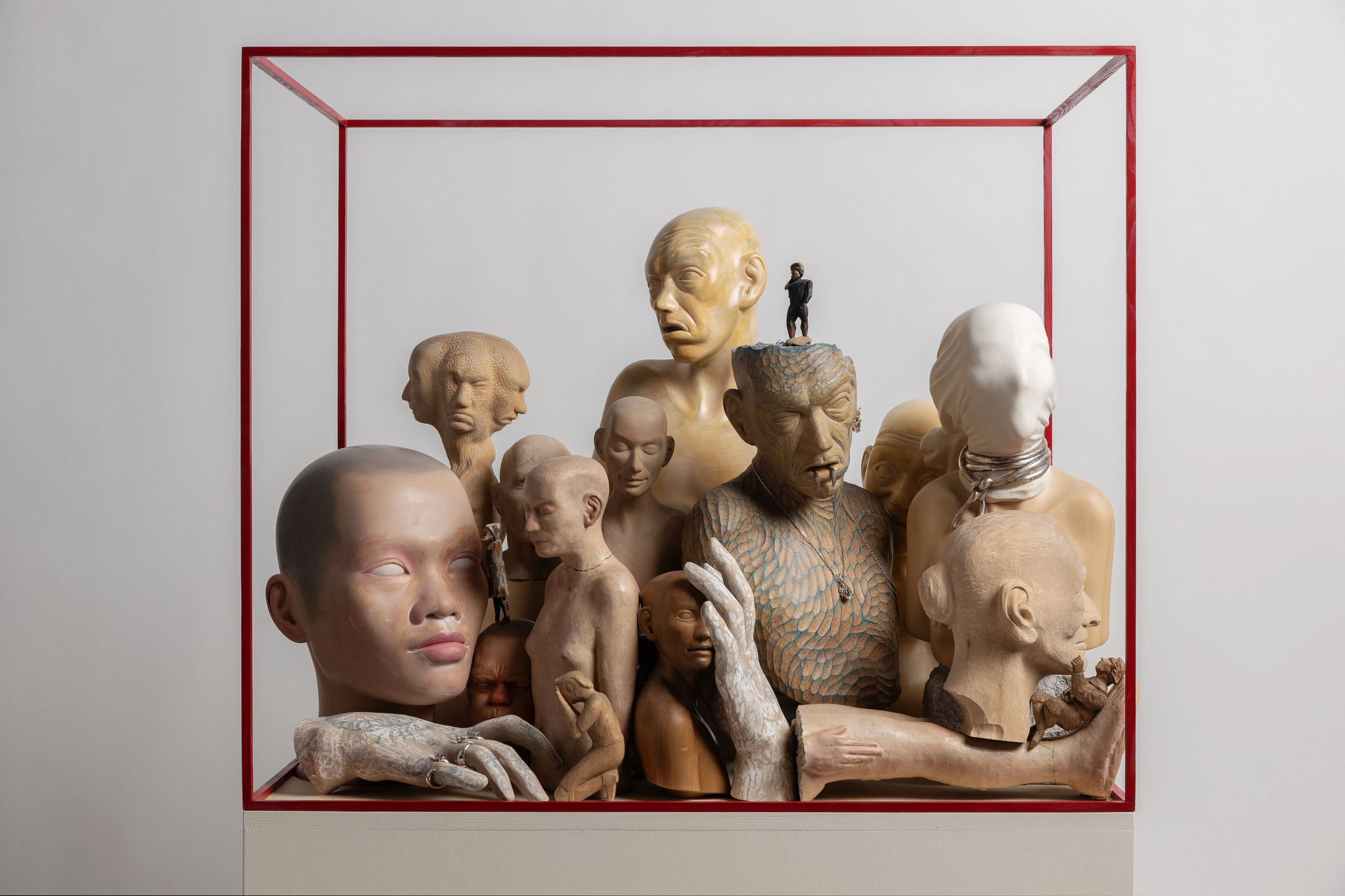Richard Štipl
1968
Podobně, jako se v sochařském díle Richarda Štipla nezapře studium malby, je zcela patrná jeho fascinace umělecko-historickou minulostí. Platí to pro náměty, které čerpá především od umělců pozdní gotiky, ale možná ještě více se tato vášeň odráží v zájmu o historické umělecké techniky a zkoumání jejich možného využití v dnešní době. Náročné postupy dávno zapomenutých technik následně využívá pro tvorbu svých postav, hlav a reliéfů. Inspiraci nacházel Štipl také v detailních anatomických voskových modelech, dříve vyráběných pro špitály a dnes vystavovaných jako artefakty v řadě světových muzeí. Od práce se včelím voskem později přešel k lipovému dřevu, s nímž se mu na staré gotické mistry nejlépe navazuje. Ať už je ale výsledek dřevěný nebo kovový, prvotním materiálem tvůrčího procesu zůstává hlína. Nadále v autorově tvorbě přetrvává také malba, například ve formě přípravných kreseb pro reliéfy. Další variantou malby je tetování na těle postav, jakási podprahová komunikace či kůže otočená naruby, která odkrývá duševní výraz figury, ale i nenápadné odkazy na současné dění ve společnosti.
Jedním z již dávno nepoužívaných uměleckých postupů, které Richarda Štipla v poslední době zaujaly, je technika z doby Zlatého věku španělského baroka, kdy se objevily vůbec první hyperrealisticky ztvárněné sochy. Postup této tvorby umělec velmi složitě dohledával, nicméně dnes již technikou španělské vrstvené polychromie, kdy se na dřevěný podklad klade několik vrstev olejomalby a klihokřídy průběžně leštěné vodou, vytvořil několik děl včetně instalace devíti hlav s názvem Breathe you fucker II. Toto dílo je další formou autorova neustálého přetváření sebe sama, nerozlučně propojující naturalisticky zvýrazněnou tělesnost a hlavu jako mapu nepřeberného množství emocí.
Just as Richard Štipl’s sculptural work is an undeniable feature of his painting, so too is his fascination with art history. This is true of the themes explores mainly from late Gothic artists, but perhaps even more so in his interest in historical artistic techniques and his exploration of their possible use in the present day. He uses the exacting processes of these long-forgotten techniques to create his figures, heads and reliefs. Štipl also finds inspiration in the detailed anatomical wax models formerly produced for hospitals and now exhibited as artefacts in many museums around the world. He later switched from working with bees wax to lime wood, with which he was best able to follow in the footsteps of the old gothic masters. However, whether the result is wooden or metal, the primary material of the creative process remains clay. Painting also persists in his work, for example in the form of preparatory drawings for reliefs. Another variant on painting is tattooing on the body of figures, a kind of subliminal communication or turning of the skin inside out, which reveals the mental expression of the figure, but also makes subtle reference to contemporary events in society.
One long abandoned artistic technique that has recently caught Štipl’s eye is that of the Golden Age of the Spanish Baroque, when the first ever hyper-realistically rendered sculptures appeared. The process of this work was very difficult for the artist to trace. However, today, using the technique of Spanish layered polychrome, whereby several layers of oil painting and chalk continuously glossed with water are applied to a wooden base, he has created several works, including an installation of nine heads entitled Breathe You Fucker II. This work is another form of the artist’s constant reimagining of himself and inextricably links up naturalistically accentuated physicality and the head as the map of a plethora of emotions.


